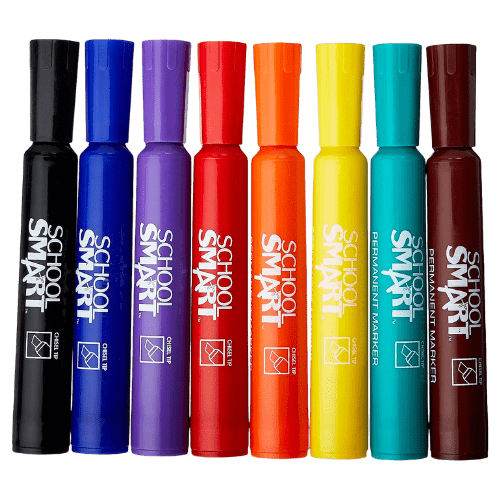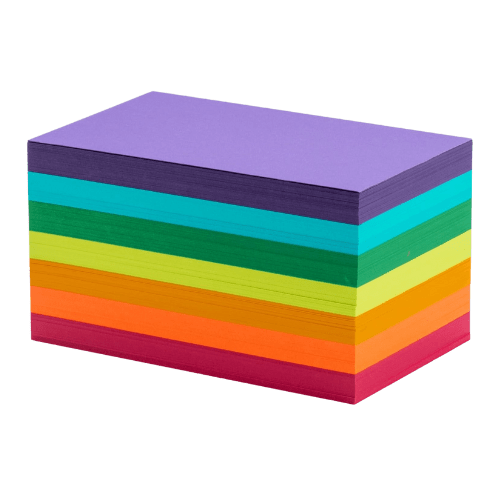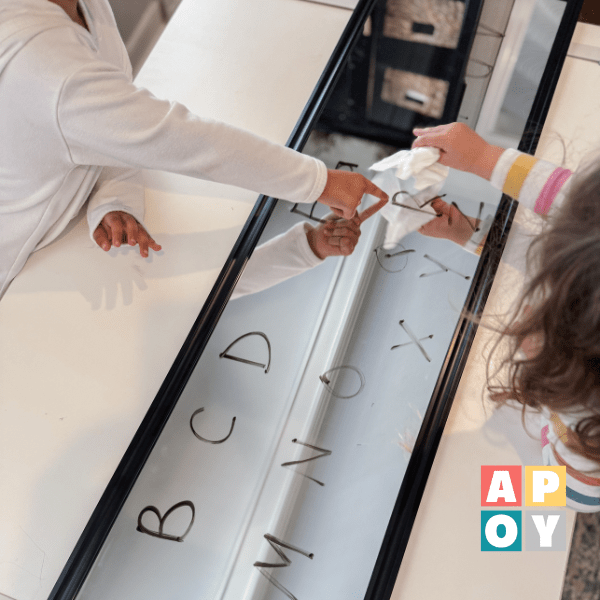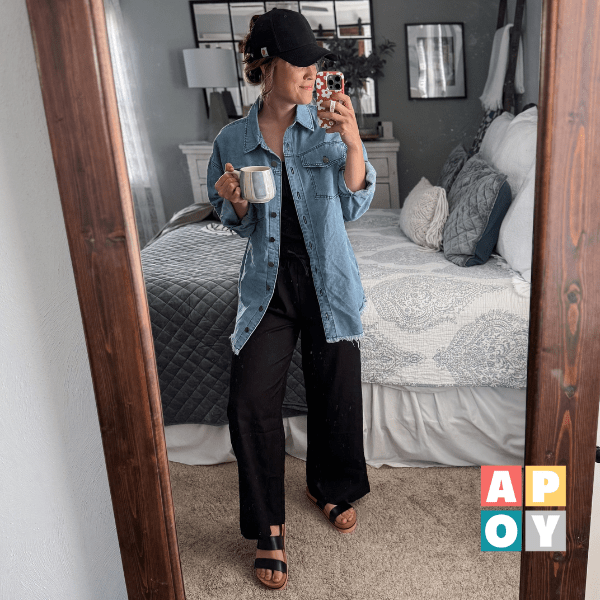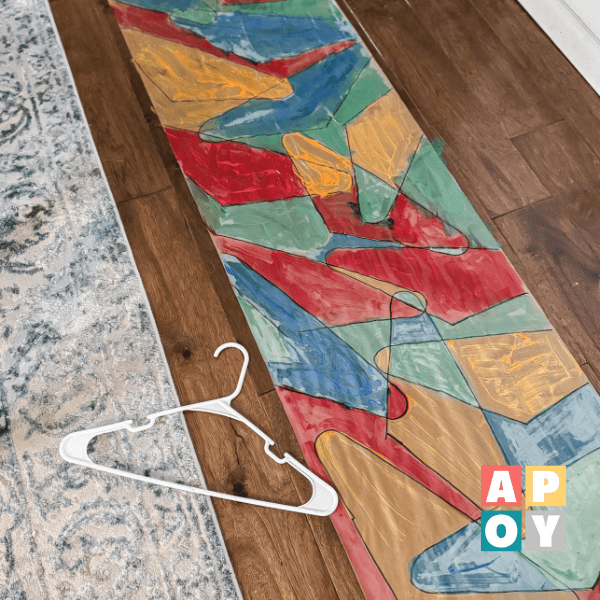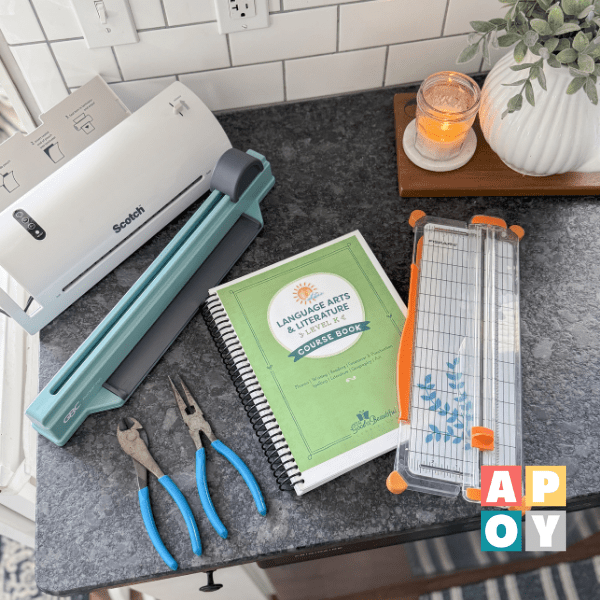Cardboard Box Card Drop: A Creative & Hands-On Fine Motor Challenge for Little Hands
On the hunt for an easy, at-home learning activity for toddlers? The Cardboard Box Card Drop is a fun color-matching and fine motor activity using a simple cardboard box. Try this engaging kids’ learning activity today!
This blog post may contain affiliate links. When you make a purchase through these links, I may earn a small commission, at no additional cost to you. I only recommend products that I genuinely believe can benefit you and your family! Your support helps maintain and improve all things A Pop of You. Thanks so much!
From Box to Brain Boost: A Fun Way to Reuse Cardboard
If you have a toddler, chances are you also have a never-ending pile of random cardboard boxes. They show up with every delivery, every bulk diaper purchase, every time you order just one more must-have parenting item. Instead of tossing them straight into the recycling bin, why not turn them into an engaging, at-home learning activity?
Welcome to Cardboard Box Card Drop—a simple, hands-on fine motor activity that encourages color recognition, sorting, and problem-solving. It’s part of my Random Household Objects Series, proving that you don’t need fancy toys to create fun, educational moments with your child.
Why Toddlers Love This Activity (and Why Parents Will Too)
This activity checks all the boxes (pun intended). It’s:
- Super easy to set up—just a box, some index cards, and a pair of scissors.
- Engaging and developmentally beneficial—helps with color matching, fine motor skills, and cognitive development.
- Low-mess and reusable—no glitter, no glue, no elaborate cleanup.
- Perfect for independent play—which means you might actually get a few minutes to drink your coffee while it’s still hot.
Let’s get into how to set it up!
What You Need
- A medium-sized cardboard box (not too flimsy)
- Index cards in four colors (or cut small pieces of construction paper)
- Scissors or a box cutter (for adult use only!)
- Markers or colored tape to outline the slots
How to Set Up the Cardboard Box Card Drop
- Prep the Box. Turn your cardboard box upside down so the bottom is facing up. Using scissors or a box cutter, cut four slits (about the width of an index card) in the box. Space them out evenly.
- Add the Color Matching Element. Outline each slit with a different color using markers, colored tape, or even small pieces of construction paper. The goal is to match the outline to the colors of the index cards you have.
- Set Up the Game. Hand your toddler a pile of color-coded index cards or construction paper pieces. Encourage them to match the card to the correct slit and push it through.
- Let the Fun Begin! Watch as your toddler engages in this simple yet satisfying color-matching and fine motor activity!
Learning Benefits of the Cardboard Box Card Drop
1. Color Recognition & Matching
Color matching activities like this help toddlers identify and categorize colors in a fun, hands-on way. Instead of just pointing at a flashcard, they’re physically engaging with the colors, reinforcing their learning.
2. Fine Motor Skill Development
Sliding a card into a small slit requires precision. This activity strengthens finger muscles, hand-eye coordination, and pincer grasp, which are essential for future skills like writing and self-care tasks (buttoning shirts, zipping jackets, etc.).
3. Cognitive & Problem-Solving Skills
Your toddler is making decisions:
- “Which color is this?”
- “Where does it go?”
- “How do I get it in the slot?”
That’s early problem-solving in action!
4. Encourages Independent Play
If your child gets really into it, they might play independently for a good stretch of time—aka, a parenting win.
Ways to Switch It Up for More Fun
Want to extend the activity? Here are a few simple variations:
- Add numbers or shapes to the index cards and slits for extra learning.
- Turn it into a race—see how fast your toddler can match all the cards.
- Let them decorate the box with stickers or crayons for added creativity.
- Use different textures—try cutting cards out of felt, foam, or even old cereal boxes for sensory fun.
FAQs: Troubleshooting Toddler Attention Spans
“My toddler isn’t interested. What should I do?”
Try demonstrating it first! Show them how to push a card through and make it a big deal. If they still resist, take a break and come back later—sometimes timing is everything.
“They just want to throw the cards everywhere.”
Totally normal. Give them a little time to explore, then gently guide them back to the task. If all else fails, lean in—throwing is still fine motor practice!
“They finish it too fast. How do I make it last longer?”
Once they get the hang of it, challenge them! Ask them to find “the blue card” or drop the colors in a specific order. You can also add new elements like numbers or letters.
More Activities Using a Cardboard Box
If you’re ready for more cardboard box fun, don’t stop now! Here are some creative ways to turn a simple cardboard box into an educational playtime tool:
- Cardboard Box Road Mazes: Drive toy cars along colored lines on a cardboard maze to practice color matching and hand-eye coordination.
- Cardboard Box Roll & Cover: Roll a cardboard die, count the dots, and cover numbers on paper with sticky notes to practice counting and fine motor skills.
- Cardboard Box Draw: Let your toddler color a cardboard box to express creativity and develop fine motor skills.
- Alphabet Car Parking Lot: Match lowercase letter stickers on toy cars with uppercase letters in a cardboard parking lot to learn the ABCs and improve matching skills.
- Clothespin Letter Matching: Match uppercase and lowercase letters using clothespins on a clothesline to enhance letter recognition and fine motor skills.
Each of these activities will turn a simple cardboard box into a fun and educational tool using materials you likely already have at home!
Easy Activities for Toddlers Start with What You Have
The Cardboard Box Card Drop is proof that you don’t need a fancy craft setup or expensive learning toys to create a meaningful kids’ learning activity. Sometimes, the best activities using a cardboard box are the simplest ones.
Next time a box arrives at your door, don’t toss it just yet—there’s a whole world of at-home learning activities waiting inside. Stay tuned for the next Random Household Objects activity in this series!



Hey, I’m Katelyn, the “Achievably Extra” Mom! Join me for creative family fun and practical tips! Let’s inspire each other!




